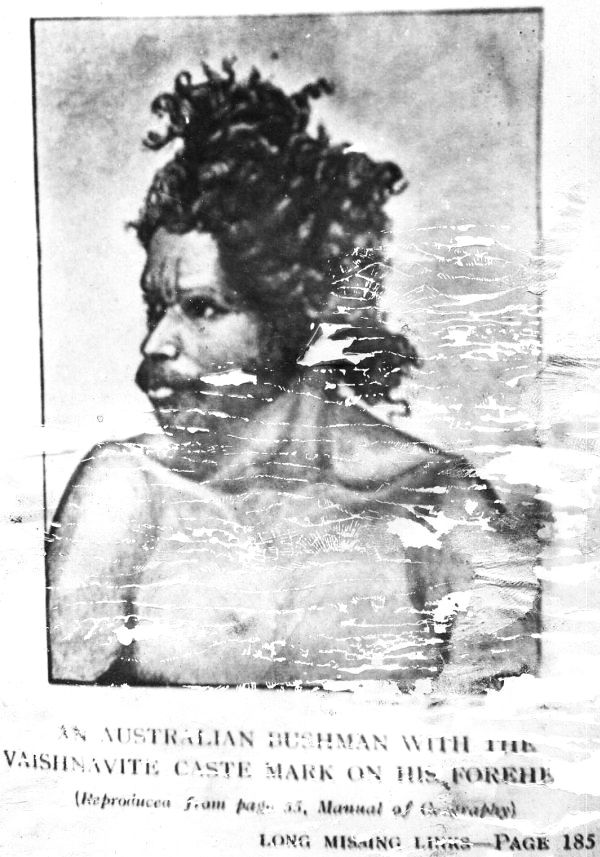Australian bush man with Vedic (Vaishnavite) Tilak on forehead[/caption]Indigenous Australians are the original inhabitants of the Australian continent and nearby islands, who are estimated to have migrated from Africa to Asia 70,000 years ago and then from Asia to Australia around 50,000 years ago.

Anthropologists in India reveal that DNA evidence linking Indian tribes to Australian Aboriginal people points to the fact that humans arrived in Australia via a southern coastal route through India.
Aboriginal Australians, also referred to as Aborigines, are people whose ancestors were indigenous to the Australian continent—that is, to mainland Australia or to the island of Tasmania, before British colonisation of the continent began in 1788.
Uru megalithic sites of Australia date back to between 30,000 and 50,000 years, with extensive sites in the central west of New South Wales.
SUN is the most common symbol used in all megaliths erected by Uru people.
These Uruans worshipped Sky-Father & Mother-Earth. In Sanskrit ‘Uru‘ (उरु) means ‘Earth‘. This may be a reference to the ‘Mother-Earth‘ in Uruan culture.
Worshipping earth as mother and Sun as sky god is common in Vedic hinduism.
In Sanskrit ‘Aru‘ (अरु) means the ‘Sun’. From this names like Arun (means Sun) are derived.
One can even arrive an at assumption that the name ‘Australia‘ must be a distorted version of Arustaralalaya (Arus-Taral-Alaya), where ‘Arus‘ (अरुस्) means the ‘Sun’, ‘Taral’ (तरल) means ‘Water’ (route they took to travel from Asia till Australia) and ‘Alaya’ (आलय) means ‘home‘ or a ‘retreat‘.
So, Arustaralalaya or Australia is home of Sun-praying, Water-travelled people.
On 30th October, 1975, Gympie Times published this :
“At Dogun, schoolboy Cliff Brown, 13, found an elephant about 100mm high carved from beige granite. It is thought to be the Hindu God Ganesha.” – The Gympie Times.
(Refer – Ganesh Statue found at Gympie Pyramid)
On 14th January 2013, BBC News quotes that a genetic research study which has concluded that Australia experienced a wave of migration from India about 4,000 years ago.
It also says that a Genome-wide data substantiates that the Holocene gene flowed from India to Australia.
An Australian Bushman (in top picture) can be seen wearing a Vaishnavaite (U shaped) tilak mark on his forehead, which is still practiced in India.
